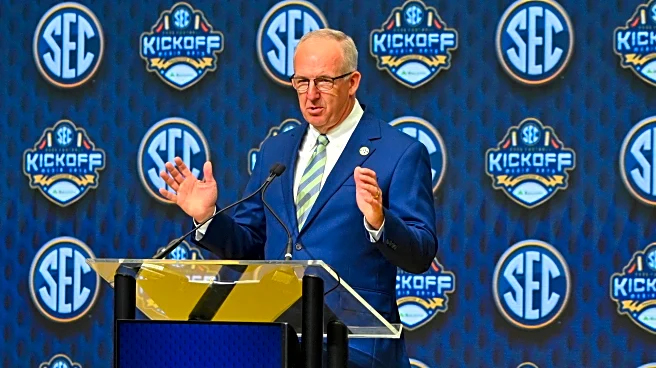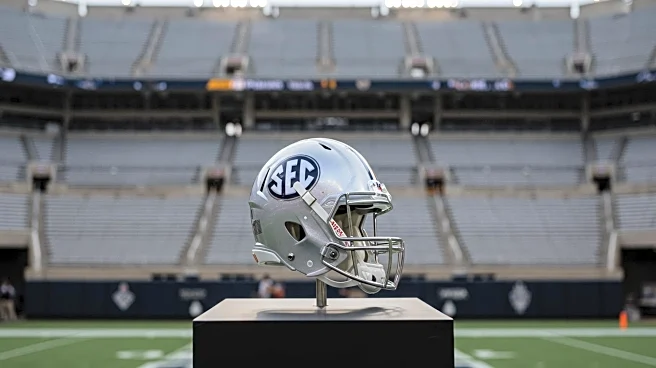What's Happening?
The cost of securing top talent in college football has reached unprecedented levels, with Power 4 programs spending significantly to retain and acquire players. A survey by ESPN reveals that quarterback positions now command between $1 million and $2 million, with elite players earning even more. This trend is driven by increased revenue sharing with athletes and the competitive nature of the transfer portal. The lack of transparency in player earnings creates an inefficient market, with wide disparities in compensation across positions.
Why It's Important?
The escalating costs in college football reflect broader changes in the sports industry, where player compensation is becoming a critical factor in team dynamics and competitiveness. This shift could lead to increased financial pressure on college programs, potentially affecting their ability to invest in other areas such as facilities and coaching staff. The focus on high-value positions like quarterbacks underscores the strategic importance of these roles in achieving success on the field. Additionally, the lack of transparency in earnings could lead to disparities and tensions within teams.
What's Next?
As the market for college football talent continues to evolve, programs may need to adopt more strategic approaches to player recruitment and retention. This could involve greater emphasis on developing homegrown talent and optimizing resource allocation. The ongoing debate about player compensation and revenue sharing is likely to intensify, potentially leading to regulatory changes or new industry standards. Stakeholders, including college administrators and athletic directors, will need to navigate these challenges to maintain competitive balance and financial sustainability.












